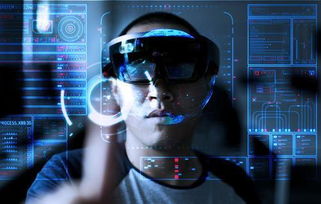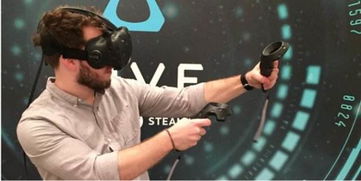Ar: A Multidimensional Exploration of Augmented Reality
Augmented Reality (AR) has emerged as a revolutionary technology that seamlessly blends the digital world with the physical one. By overlaying digital information onto the real world, AR has the potential to transform various industries, from entertainment to healthcare. In this article, we will delve into the intricacies of AR, exploring its various dimensions and applications.
Understanding Augmented Reality

At its core, AR is a technology that enhances the real world with digital information. Unlike Virtual Reality (VR), which creates a completely artificial environment, AR overlays digital content onto the user’s view of the real world. This is achieved through the use of cameras, sensors, and displays, allowing users to interact with both the physical and digital worlds simultaneously.
AR can be experienced through various devices, including smartphones, tablets, and specialized AR glasses. These devices capture the user’s environment, process the data, and display the augmented content in real-time. The technology has evolved significantly over the years, with advancements in computer vision, machine learning, and graphics rendering.
Applications of Augmented Reality

AR has found applications in a wide range of industries, offering innovative solutions to everyday problems. Here are some of the key areas where AR is making a significant impact:
| Industry | Application |
|---|---|
| Healthcare | Medical training, patient care, and remote surgery |
| Education | Interactive learning experiences, virtual field trips, and language learning |
| Retail | Virtual try-ons, product demonstrations, and personalized shopping experiences |
| Entertainment | Interactive gaming, live events, and virtual tourism |
| Manufacturing | Remote assistance, quality control, and design collaboration |
One of the most notable applications of AR is in healthcare. Surgeons can use AR to visualize complex medical data during operations, improving accuracy and reducing the risk of complications. Additionally, AR can be used for medical training, allowing students to practice procedures in a safe, virtual environment.
In education, AR offers immersive learning experiences that can make complex concepts more accessible. Students can explore historical events, interact with virtual models, and even take virtual field trips to places they might not be able to visit in person.
The retail industry has also embraced AR, offering customers the ability to visualize products in their own space before making a purchase. This can lead to increased satisfaction and sales.
AR has also made its mark in entertainment, with interactive gaming experiences and live events that blur the line between the physical and digital worlds.
Challenges and Future of Augmented Reality

While AR has immense potential, it also faces several challenges. One of the primary challenges is the need for high-quality hardware that can deliver a seamless AR experience. Additionally, privacy concerns and the potential for misuse of AR technology are areas that need to be addressed.
Looking ahead, the future of AR seems promising. As hardware becomes more advanced and affordable, we can expect to see even more innovative applications of AR in various industries. The integration of AR with other technologies, such as artificial intelligence and the Internet of Things (IoT), will further enhance the capabilities of AR and open up new possibilities.
In conclusion, AR is a powerful technology that has the potential to transform the way we interact with the world. By understanding its various dimensions and applications, we can better appreciate the impact of AR and look forward to the exciting developments that lie ahead.
